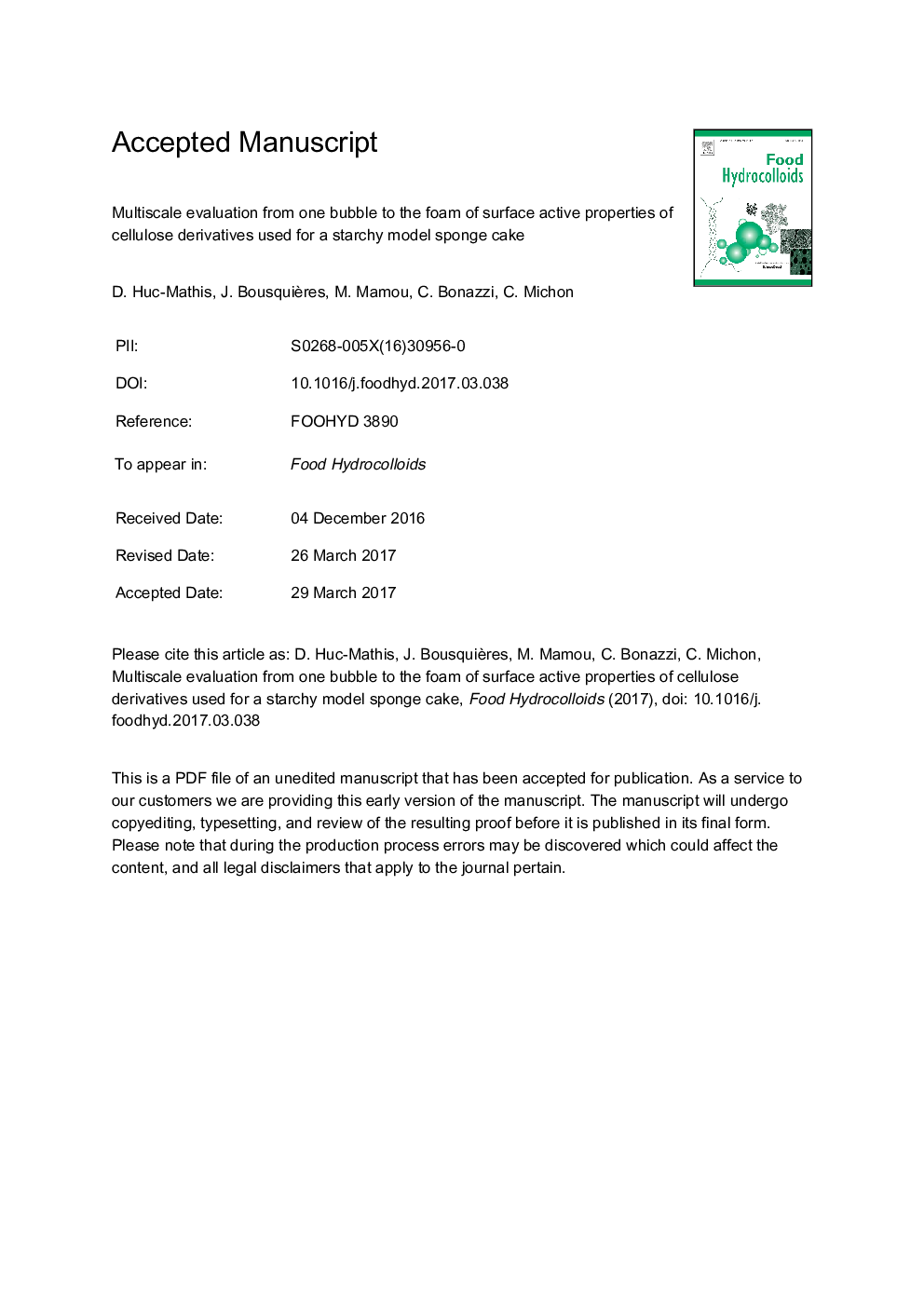| Article ID | Journal | Published Year | Pages | File Type |
|---|---|---|---|---|
| 4983778 | Food Hydrocolloids | 2017 | 40 Pages |
Abstract
Interfacial properties of cellulose derivatives (HPMC and MC) were studied to understand their role in structuring a foam during the whipping process. Multiscale studies were performed to explain macroscopic observations with microscopic mechanisms. Results showed that HPMC was more flexible and had higher viscosity and shear-thinning properties than MC, which in turn diffused quicker to the interface due to a smaller molecular weight. Both hydrocolloids showed a good ability to stabilize interfaces through their surface tensions and dilatational moduli measured by static and dynamic tensiometry, respectively. However, only HPMC and HPMCÂ +Â MC solutions were able to develop a stable foam. Methylcellulose formed more rigid interfaces and the interfacial elasticity was probably too high, leading to a difficult fractionation of bubbles. Moreover, its lower viscosity measured at low shear rate could explain its incapability to retain bubbles in the bulk just after their formation. HPMC and MC display complementarity and synergistic effects when used together, since a foam with much smaller bubbles is formed after only 2Â min of whipping this mix. The bubble size was immediately smaller for solutions of HPMCÂ +Â MC than for HPMC alone, with similar final air quantity. Finally, a hypothesis about the structuring mechanism of cellulose derivatives at air/water interfaces was proposed. MC would adsorb first at the interface and stabilize it but also increase its rigidity too much, hence its fragility against high mechanical stress. HPMC would come afterwards to the interface, but through its higher flexibility it would contribute to a higher resistance of the interface.
Related Topics
Physical Sciences and Engineering
Chemical Engineering
Colloid and Surface Chemistry
Authors
D. Huc-Mathis, J. Bousquières, M. Mamou, C. Bonazzi, C. Michon,
